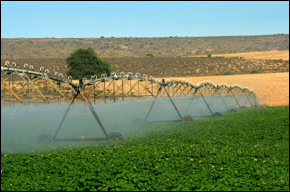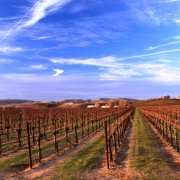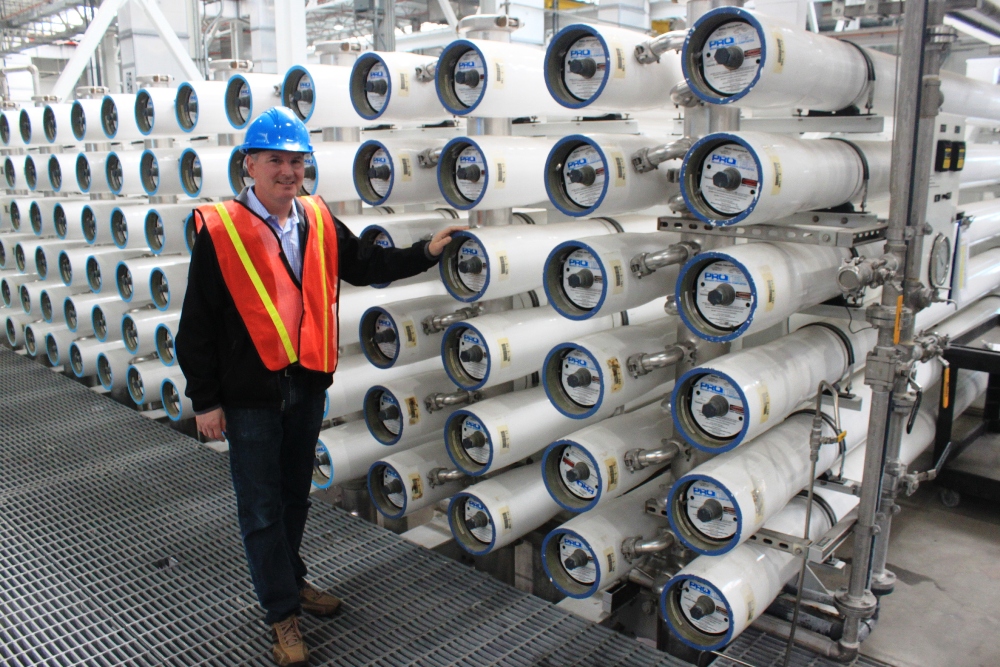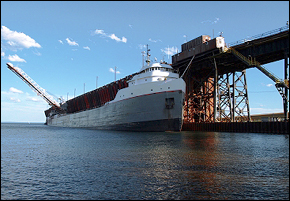Peter Gleick: Water use in the United States has Leveled off: New Remarkable Numbers Released
New numbers on total water use in the United States in 2005 have just been released by the U.S. Geological Survey, which does an assessment of water use every five years. We have been tracking these numbers for many years. The new numbers are the latest evidence for a remarkable change in U.S. water use toward more efficient use — a change the Pacific Institute has been calling for since our founding 22 years ago.
Water Number: 410 billion gallons per day in 2005 compared to 413 billion gallons per day in 2000. This is the total amount of water withdrawn in the U.S. for all purposes (residential, commercial, agricultural, industrial, and power plant cooling). Despite continuing population growth, despite continued economic growth, total water use in the United States is effectively unchanged from five years ago (see the Figure, below). Even more remarkable? Water use today is lower than it was 30 years ago, in 1975. And on a per-capita basis, the drop is dramatic: Water use per person in the U.S. is nearly 30 percent lower than in 1975.
This is stunning news, as we describe in a new Pacific Institute analysis. Water planners are trained to assume that as population and economies grow, water use must inevitably grow. This assumption is why we hear the drumbeat of calls for new supply, new supply, new supply. We argue that this is false — it is possible to improve the efficiency of water use, as our studies repeatedly show, and such improvements eliminate the need for expensive and environmentally damaging new supply. And the newest data continue to back us up. The remarkable changes in water use in this country over the past 30 years are the result of two major factors: improvements in efficiency and changes in the industrial character of our water use. But the first factor is by far the most important. We are growing more food with less water, and irrigation demand is down. We are producing more goods and services with less water, and industrial demand is down. It used to take 200 tons of water to make a ton of steel. Now steel plants in the U.S. use less than 20 tons of water to make a ton of steel. That is a 90% reduction.
Total water use in the U.S. peaked in 1975 and has declined since then.
If each American today still used 1,940 gallons per day (as we did in 1975), population growth would have caused the U.S. to use an additional 165 billion gallons per day. That’s equal to more than 12 new Colorado Rivers — or enough water for everyone in California, New York, Florida, Texas, Illinois, and Michigan. We could never have supplied that much more water without destroying our remaining rivers, lakes, aquifers, and aquatic ecosystems. Conservation and efficiency improvements have saved our butts.
We must not get complacent. While total water use in the U.S. has, for now, leveled off, it can go back up if we stop working to improve efficiency. And as populations shift from water abundant regions of the U.S. to water-short regions, our local problems often get worse. And ultimately, water is a local problem. We must work harder to improve efficiency in these arid and semi-arid regions. And we must work harder to address population growth and distribution given our regional resource constraints.
Peter Gleick
Dr. Gleick’s blog posts are provided in cooperation with the SFGate. Previous posts can be found here.











Dont you think though this is also a function of the big shift in our economy towards services during this time period?
For instance, arent we just sending many of our own problems to other countries?
The total water consumption curve clearly shifted between 1975 and 1980 and declined from 1980 to 1985. This was driven by the shift of America’s economy from manufacturing to service, the shift of heavy industry overseas, the increase in agricultural productivity, efficiencies in irrigation, and efficiencies in power production. Drinking water consumption did not begin to decline until after the 1994 Energy Policy Act, which introduced low flow water plumbing fixtures for all new construction and retrofits. If the total water consumption chart is shown as water consumtion per capita, by dividing by the US population, a dramatic decline in per capita consumtion will be illustrated. This trend is expected to continue as the economy continues the shift from manufacturing to service and water distribution, water use, and water systems become more efficient.